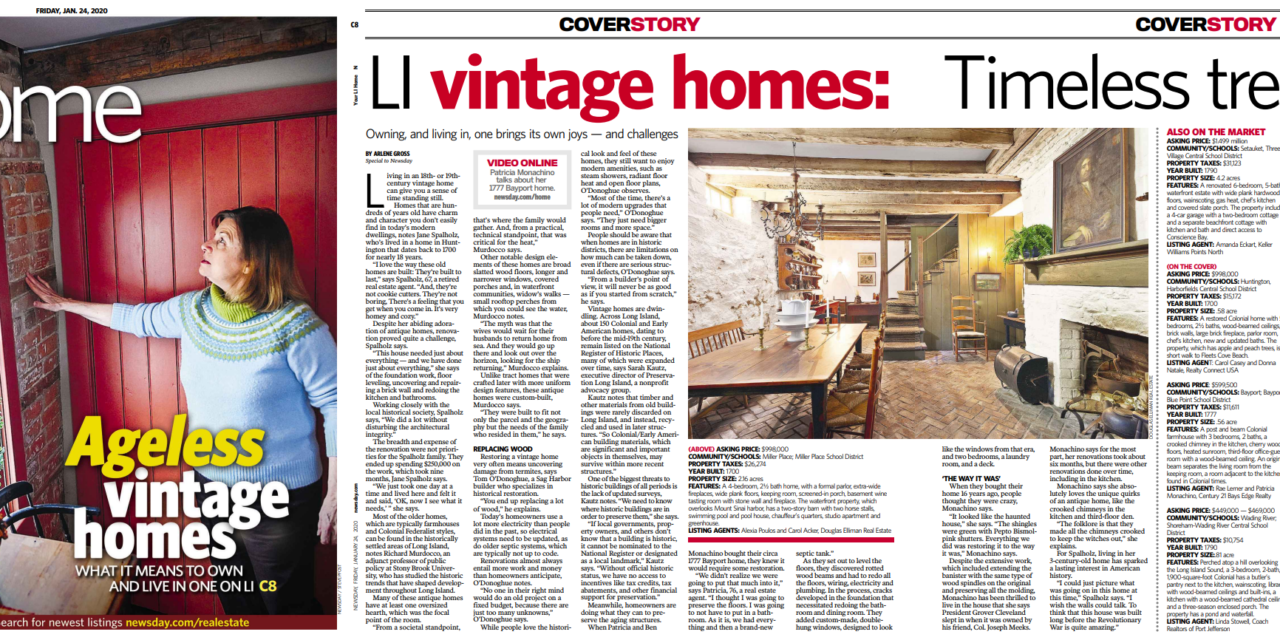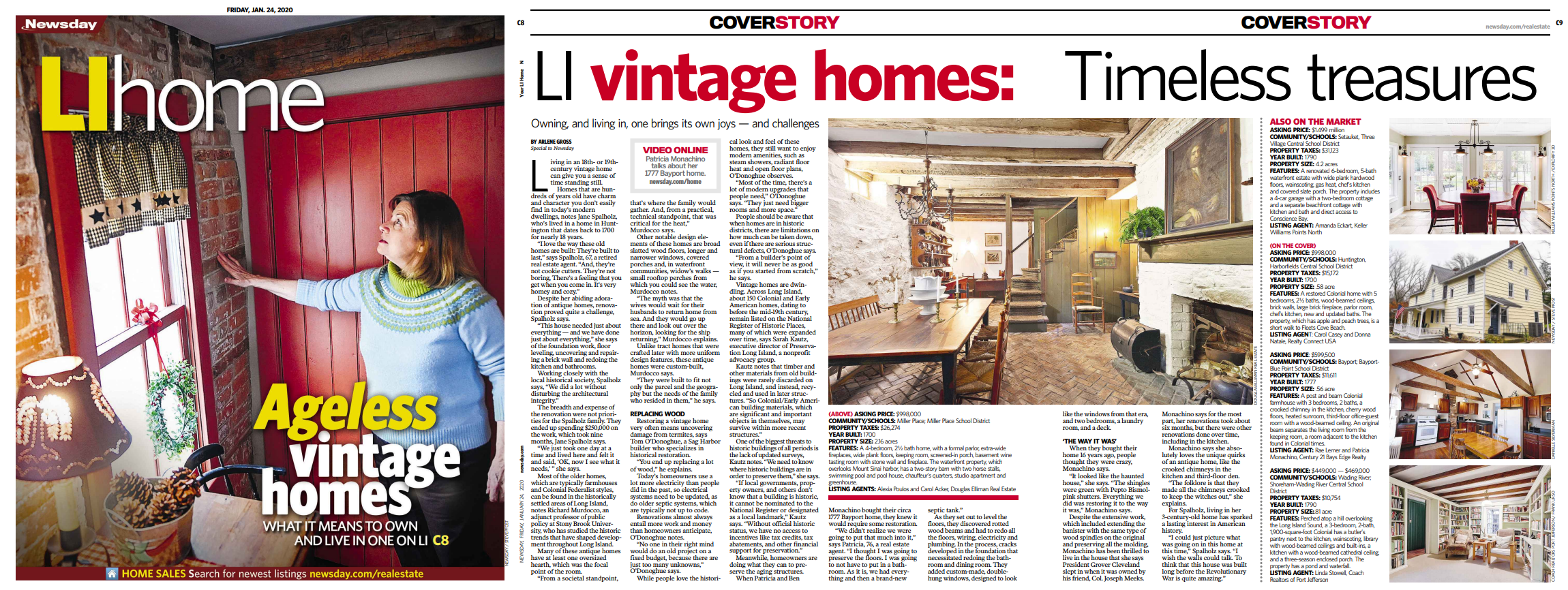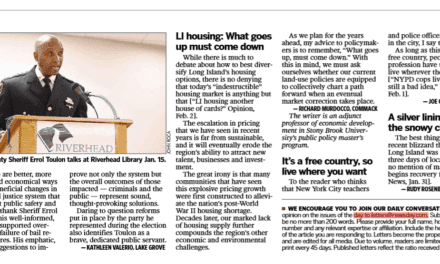The following excerpt is from an article by Arlene Gross that was published as the cover story of Newsday’s real estate section in the Friday, January 24th edition. You can read the entire piece here.
Most of the older homes, which are typically farmhouses and Colonial Federalist styles, can be found in the historically settled areas of Long Island, notes Richard Murdocco, an adjunct professor of public policy at Stony Brook University, who has studied the historic trends that have shaped development throughout Long Island.
Many of these antique homes have at least one oversized hearth, which was the focal point of the room.
“From a societal standpoint, that’s where the family would gather. And, from a practical, technical standpoint, that was critical for the heat,” Murdocco says.
Other notable design elements of these homes are broad slatted wood floors, longer and narrower windows, covered porches and, in waterfront communities, widow’s walks — small rooftop perches from which you could see the water, Murdocco notes.
“The myth was that the wives would wait for their husbands to return home from sea. And they would go up there and look out over the horizon, looking for the ship returning,” Murdocco explains.
Unlike tract homes that were crafted later with more uniform design features, these antique homes were custom-built, Murdocco says.
“They were built to fit not only the parcel and the geography but the needs of the family who resided in them,” he says.














